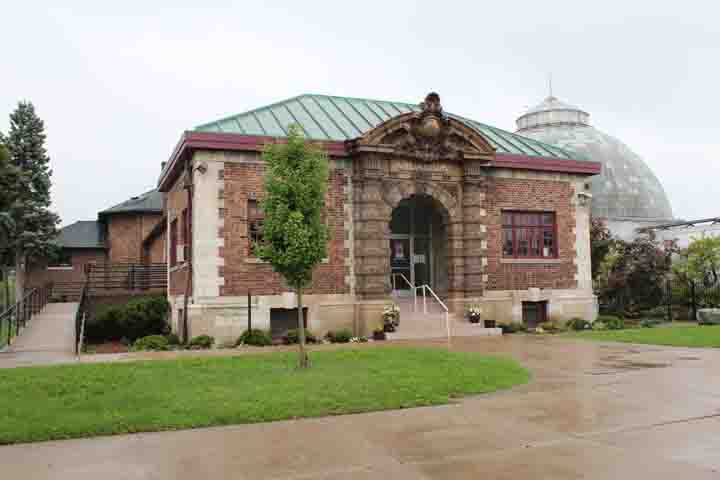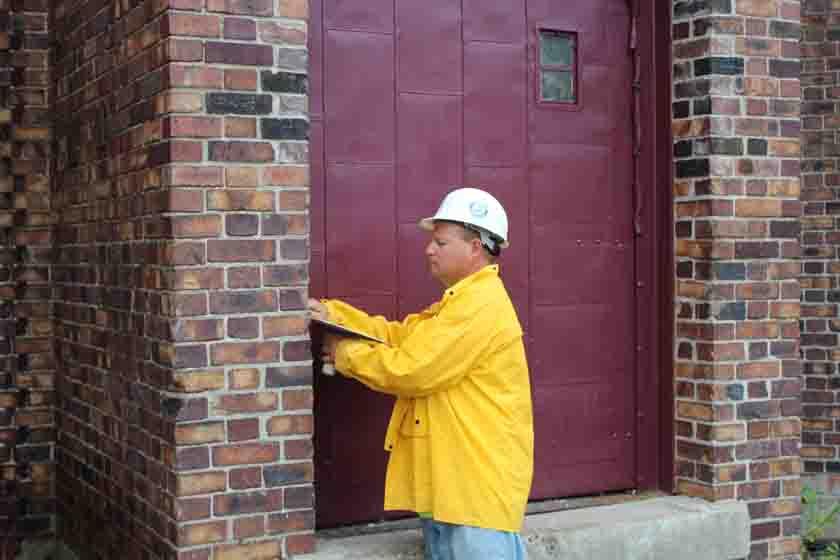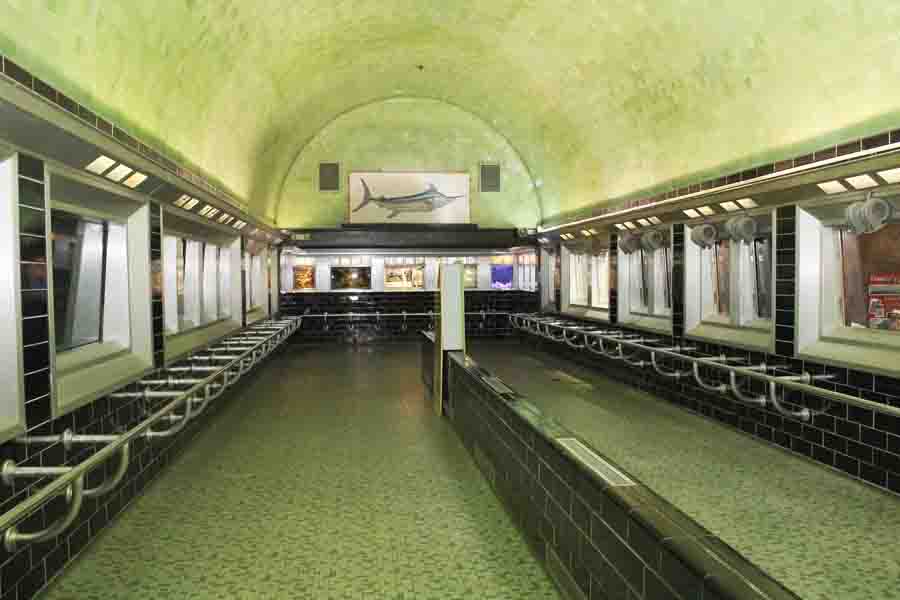Masonry work restores state's only aquarium
Date Posted: October 10 2014

Contractor Grunwell Cashero on Sept. 2 completed some key tuckpointing and other masonry repairs to the building’s brick exterior, mainly in out-of-the way areas in the back of the building. The masons, from Bricklayers and Allied Craftworkers Local 2, also acted as arborists, removing two large trees growing out of the building’s chimney.
“Aside from the two big trees coming out of the chimney, the building was in pretty good shape,” said Grunwell-Cashero Foreman Scott Vargas of BAC Local 2. “The chimney was the worst. We re-bricked it, and then we replaced 17 lintels, and performed tuckpointing in various areas. For a 110-year-old building, the masonry’s not bad at all.”
Located on Belle Isle, the aquarium reopened in September 2012 after being closed due to the city’s budgetary constraints. Dwarfed in size by modern aquariums, the historic facility holding the fish tanks on Belle Isle retains an old-fashioned charm, with an interior and exterior that have barely changed since the building opened.
“Belle Isle’s celebrated siblings, the Belle Isle Aquarium and the Anna Scripps Whitcomb Conservatory, opened together on Aug. 18, 1904,” says Historic Detroit.org. “The two landmarks, designed by renowned architect Albert Kahn, fascinated and delighted generations of Detroiters. At the time of its closure in 2005, the aquarium was the longest continuously running aquarium in the United States and the only aquarium in Michigan.”
The Belle Isle Conservancy’s Vance Patrick said the group is “very, very satisfied” with the work performed by Vargas and the Grunwell Cashero team, especially blending the new with the old. “I challenge you to figure out where they worked on the building,” he said. New windows were also installed.
Vargas said the aquarium has a new roof, and items on the to-do list include making the bathrooms handicapped-accessible, and upgrading the electrical and HVAC systems. The group is primarily funding this and the planned projects with state grant money.
The aquarium opened with great fanfare in 1904. According to Historic Detroit, more than 5,000 people visited on the attraction’s first day. Some half a million visited during its first year. The building cost $165,000 (about $4.06 million today) and at the time of its opening, was among the six largest in the world.
Architect Kahn “outfitted the interior with sea-green glass tiles to give visitors the feeling that they were in an underwater cavern,” says Historic Detroit. “Forty-four tanks filled with critters from the Great Lakes and the world’s oceans line the walls. Combined, the tanks contained 5,780 gallons of water. Magnificent pillars and other details compliment the soaring arched ceilings, as high as three stories in the center of the building. A classroom sits near the main entrance.
The original equipment allowed for the display of both seawater and fresh-water marine life and the keeping of the right water temperatures in the tanks. The water was recycled through the tanks because, it was said, that fish survive better in water they’ve been in before.
In the mid-1950s the aquarium underwent a renovation and had about 3,600 fish of 150 species on display. Then-curator Keith Kreag said it was the largest collection of fish ever put on display and perhaps the finest collection of freshwater fish in North America, with piranhas, lampreys and electric eels.
Attendance, said Historic Detroit, declined steadily in the 1980s and 1990s. In 1995, more than 113,000 people visited the aquarium. By 2004, the number had fallen to 56,000, and the doors were closed the next year. Fortunately, the closed building was not victimized by scrappers.
The reopening of the aquarium was one of the first acts of the newly formed Belle Isle Conservancy in 2012. The nonprofit conservancy serves to “preserve, protect, support and restore Belle Isle’s treasures for the enjoyment of all,” according to its newsletter. Open every Saturday and Sunday from 10 a.m. to 3 p.m., the aquarium was able to reopen through the efforts of a dedicated group of about 30 volunteers. There are currently 60 tanks to exhibit fresh water and marine life from around the world; 35 are filled. Between 2,000 and 2,500 people visit the aquarium every weekend. Admission is free.
“We’re paid in smiles,” Patrick said. “We’re the Great Lake State, and this is the only public aquarium in the state. We have quite a few species here, we’re free and open to the public. The combination Conservatory/Aquarium is really one building, and it’s the last one like it that remains from the Victorian Era. It’s a pretty darn cool place.

TUCKPOINTING a wall at the rear of the aquarium is Scott Vargas of BAC Local 2. He’s employed by Grunwell-Cashero.

OPENED IN 1904, the Belle Isle Aquarium is still the only one in Michigan.

THE GREEN-TILED interior of the aquarium was intended to make visitors feel as if they’re underwater.
